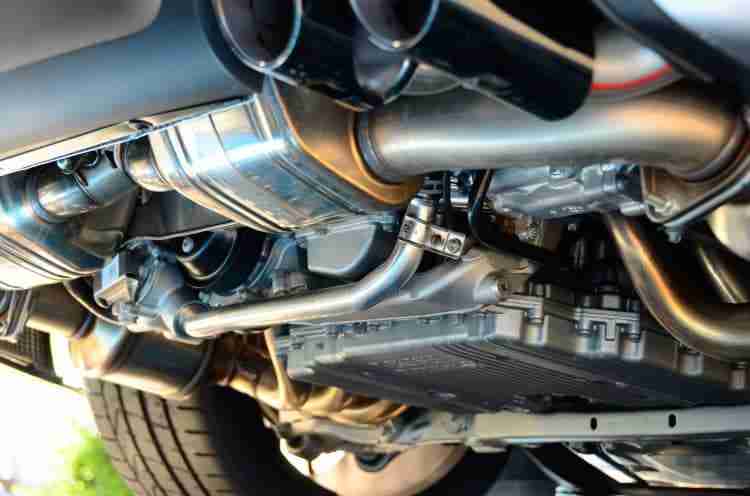How to fix an exhaust leak on the flange?

What is the function of your exhaust system?
The first and foremost goal of the exhaust system is to guide the gases from the combustion chamber to the atmosphere or a safe space. This might seem to be a simple task but this simple goal is often achieved by a rather cumbersome process.
What a safe place means is relatively known to us all. The gases need to be directed out of the vehicle and out of our direct breathing range, away from the windows. Thus, the exhaust pipes are found beneath the rear bumper of the vehicle.
Other than that, the exhaust system also muffles the sound of the explosions which happen inside the engine of your vehicle. Not only this, but the exhaust system also muffles the sound of the high-velocity gases escaping through the tail-pipe. If you look deeper into the design of the system, you will be able to recognize the complicated path it takes. This path tends to be extremely hot. It also has to handle the variety of vibrations that come from the engine while you are idling, downshifting, or flooring the accelerator and carry the harmful fumes that get created in the back of the car without getting too hot.
The system uses components like heat shields, joints, mufflers, rubber hangers, pipes, and flexible union to make this happen. The temperature ranges from ambient temperature to over 1200 degrees.
High temperature is responsible for causing maximum stress to the manifolds. A major byproduct of complete combustion is water. This water escapes the vehicle after being converted to vapor. On days when it is cold or on days where you take a short drive, the water to vapor conversion rate falls leaving the components in the exhaust system to be wet. This causes the metal pipes in the system to rust. We have often seen this happen. Along with this, the system is exposed to the most amount of debris. This happens because the system happens to be present in the bottom half of the car for the aforementioned reasons. These are the explicit reasons for you to get your exhaust system repaired or replaced as soon as a problem arises. You can do it yourself or otherwise look for professional help.
How can you identify an exhaust leak?
The first step towards repairing the leak in your exhaust system is identifying the problem in it. This can be a complicated process because the exhaust pipe is too hot. You should avoid touching the exhaust system of your automobile if it has been driven around for even some time in the last few hours.
A visual inspection would be the best way to start. You can pop the hood and start looking at the exhaust manifold. The way to locate it would be to locate the place where the exhaust gases exit the vehicle’s engine. It will either be one large tube or multiple tubes and will look rusty, it is often covered by a heat shield so try to have a detailed look at it.
From this point, you will have to follow the trail of your pipe all the way to the back of the car. You will have to identify the components for holes or broken places. You also have to inspect each and every component of your system for dents or holes. You might find large tubes or box-like structures. These are integral parts of the system.
You can also try looking for puffs of smoke through the whole system after turning on the ignition. You have to do this by crawling under the vehicle. After checking the engine oil, follow-up by going through the tailpipe. Any smoke escaping through the point is proof of the leak. You have to do this very carefully and it is important that you try avoiding any contact with the working parts of the vehicle. You might injure yourself. If you find that the whole system is in tatters, replace it without keeping a shred of doubt in your mind!
What an exhaust leak sounds like?
If you do not feel comfortable taking risks to find out the leak you can always try and locate the leak by listening to where it is coming from.
Pop the hood, start the vehicle and in the engine bay, you will be able to hear the leak from the exhaust manifold. It normally sounds like a ticking or puffing. Follow up by listening to leaks at unions and joints (flange being one of them). From the catalytic converter, the sound will turn into a buzz or a hum. The sound becomes louder as we begin to move closer to the engine. Revving the engine in intervals will make it easier for you to hear the leak.
Fix the exhaust leak at the flange
- First things first, turn off the vehicle after identifying the problem and leave it to cool for some hours.
- Clean the source of the leak by using a steel brush and while doing this make sure you put on some protective glasses. This will keep the debris from entering your eyes.
- Get hold of sandpaper to rough up the area of the pipe that needs the repair. This creates small groves in the metal and also gets rid of the dirt. This also helps you to stick the tape to the place of damage.
- Clear the place of damage with acetone.
- If the hole is small use an exhaust tape or an epoxy.
- In case of a large hole, you will have to use a clamp to fix the problem.
Final Thoughts
You can imagine how important the exhaust system is. It helps to get rid of unwanted elements. Get your system checked for leaks at regular intervals or you can do it yourself. But keeping it healthy and in a good condition is crucial for the survival of your vehicle!














No Comment